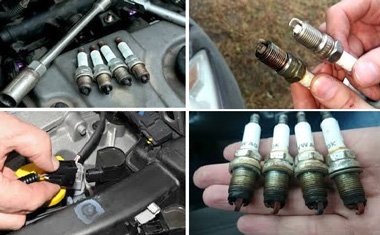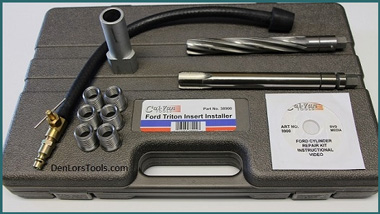Spark plug gap chart
After you have decided to buy a set of spark plug for your automobile, the bigger problem arises finding the right gapping for the plugs. In the plethora of spark plug brands and their innumerable gap lists, you might get perplexed. Having inappropriate gaps in the spark plugs will malfunction the engine.
For example, if the spark plugs are too widely gapped, then the engine will require more voltage. For this, in some cases, the ignition system fails if they don’t acquire the needed voltage. Whereas a tightened gapping causes weak sparks that lead to ineffective ignition of the air-fuel mixture. Similarly, more unusual problems like engine misfire, compression stroke, rough idling arise.
How does spark plug gap affect performance?
Nowadays, spark plug manufacturers make their plugs pre-gapped to fit in the exact vehicle it is made for. It not only frees you from the hassle of gapping but also prevents creating a mis-gap while DIYing. However, the pre-gapped ones are still slightly customizable according to the need. Hence, we brought a list to give you an idea of what spark plug gaps some brands have.
Therefore, we have selected quite a few spark plug gap charts and enlisted them to make it easier for you to find them in one place.
Champion spark plug gap chart
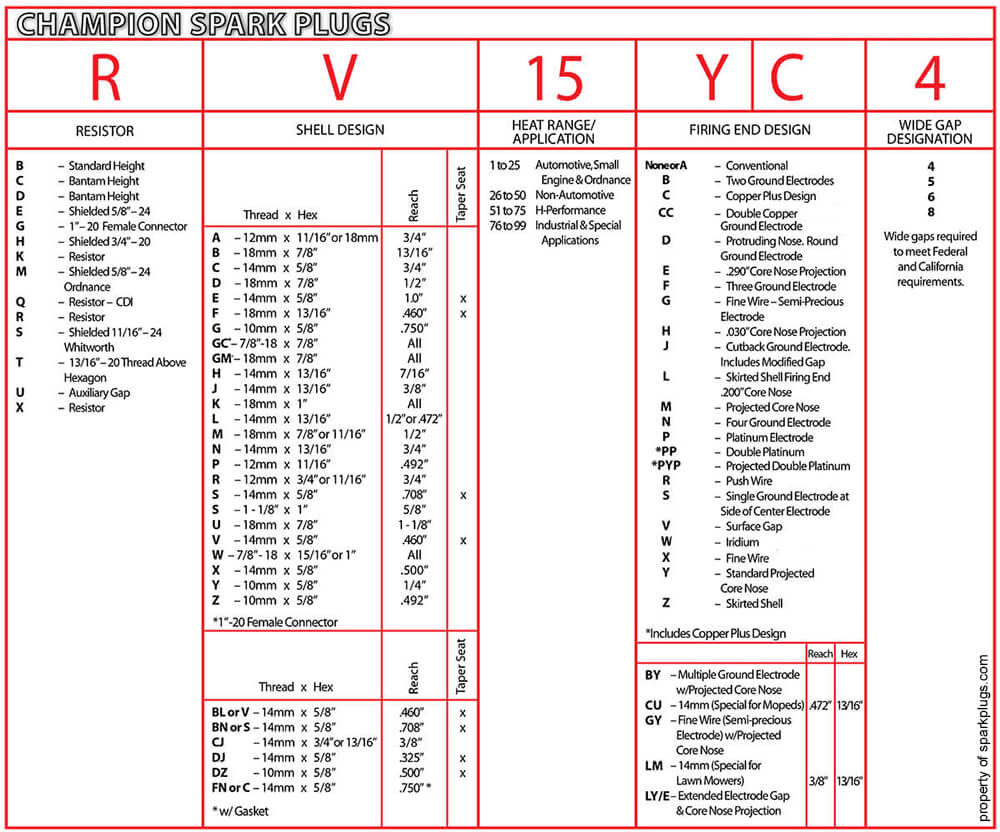
Source: Champins Numbering System or Gap Chart
Autolite spark plugs gap chart
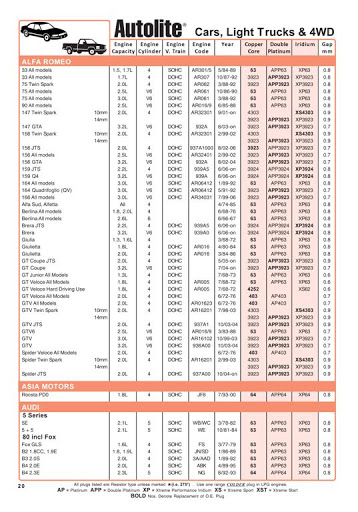
Source: Auto Lite Catalogue By Noels Autoparts
NGK iridium spark plug gap chart
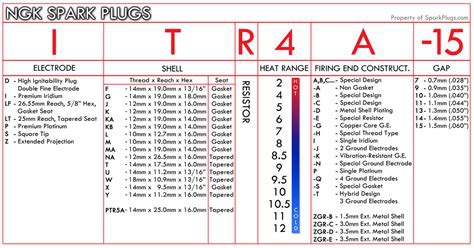
Source: NGK Iridium Spark Plug Gap Chart by Line
Gap iridium plugs
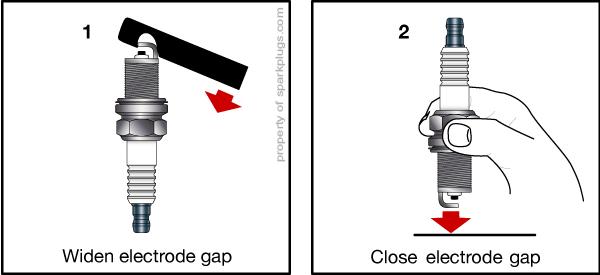
Source: NGK Gapping Guide by NGK
Lawn Mower spark plug gap chart

Source: Fixing Lawn Mover Spark Plug Issues
Chevy spark plug gap chart
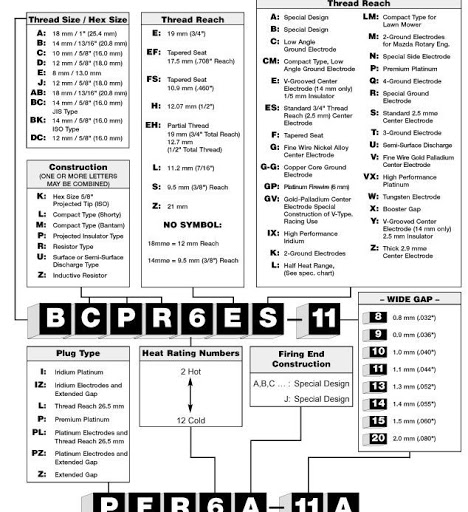
Source: Chevy Spark Plug Gap Chart by UNESE
ACDelco spark plug gap chart
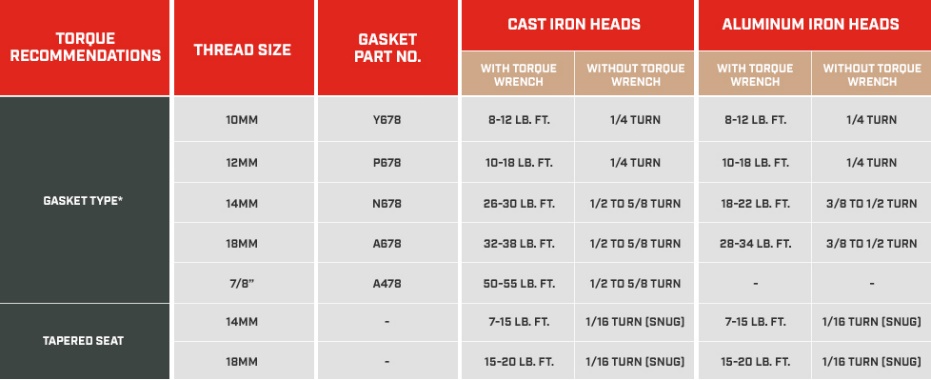
Source: AC DELCO spark plug gap chart by UNESE
Toyota spark plug gap chart

MSD spark plug gap chart
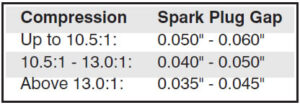
Source: MSD digital Ignition Install Guide by American Muscle
2005 Nissanaltima spark plug gap
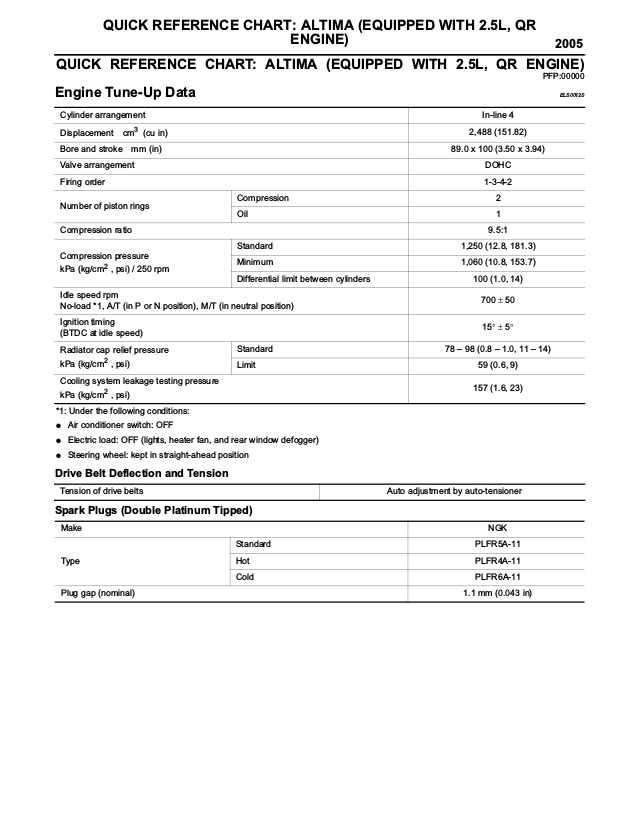
2005 scion XB spark plug gap

What gap should my spark plugs be?
The gap between the electrodes of a spark plug should be tailored to your vehicle’s specific make and model. The spark plug gap should generally be between 0.028” and 0.060”.
What happens if the spark plug gap is too big?
When the spark plug gap is too large, it can cause a few problems. First, it can cause misfires. Misfires occur when the spark plug fails to ignite the air-fuel mixture in the combustion chamber, resulting in rough engine operation and reduced power. The extra air gap can also cause the spark to reach the wrong part of the combustion chamber, leading to incomplete combustion and decreased fuel economy.
Is a smaller spark plug gap better?
No, a smaller spark plug gap is not necessarily better. It can cause a variety of issues with your engine and its performance.
What is the spark plug gap for NGK?
In general, most NGK spark plugs are designed to have a gap of 0.044”, although it’s best to consult your owner’s manual or a trusted mechanic. If your spark plug gap is not within the right range, it can be adjusted with a special tool, such as a feeler gauge.
Why are NGK spark plugs better?
NGK spark plugs are made with high-quality materials that provide superior performance and reliability. The materials used in producing NGK spark plugs are designed to last, meaning you won’t have to replace them as often as other spark plugs.
Another benefit of NGK spark plugs is that they are designed to reduce friction, which is responsible for wear and tear on your engine. This means that your engine can last longer and run more efficiently. As a result, you can save money in the long run on fuel and maintenance costs.
Finally, NGK spark plugs are designed to be corrosion-resistant. This helps to ensure that your spark plugs will last longer, even in extreme temperatures or in harsh conditions.
What Happens If the Spark Plug Gap Is Too Small?
When the spark plug gap is too small, it can cause several problems. First, the spark plug won’t fire correctly, which can cause misfires. This can then lead to poor engine performance, as well as increased fuel consumption.
Another problem if the spark plug gap is too small is that the spark plug can become fouled. This means that carbon or other debris can build up on the spark plug, which can cause the spark plug to stop firing completely.
Finally, if the spark plug gap is too small, it can cause the spark plug to overheat. This can lead to pre-ignition when the spark plug fires before the piston reach the top of its travel. This can cause engine knocking and damage to the engine.
Other Common Spark Plug Problems
In addition to the spark plug gap being too small, a few other common issues can affect spark plug performance. These include worn spark plugs, damaged spark plugs, and spark plugs that are too hot or cold.
Worn spark plugs can lead to poor engine performance, increased fuel consumption, and increased emissions. Damaged spark plugs can cause the same problems, misfires, and engine knocking.
Finally, spark plugs that are too hot or too cold can also lead to poor engine performance. Spark plugs that are too hot can cause pre-ignition and engine knocking, while spark plugs that are too cold can cause misfires and poor engine performance.

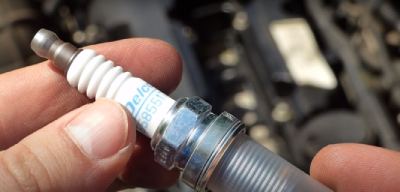
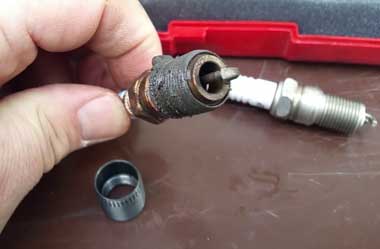
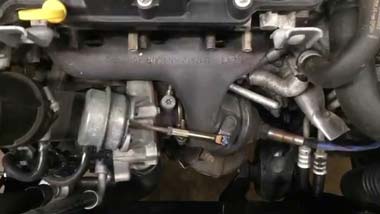
![Top 5 Best Spark Plugs for Mustang V6 [Review Guide] In 2023](https://torqueadvisor.com/wp-content/uploads/2021/06/Best-Spark-Plugs-For-Mustang-V6-1.jpg)
